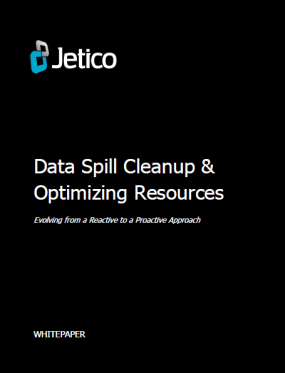WHITEPAPER – Data Spill Cleanup & Optimizing Resources
BCWipe Search Out Now!
First-Ever Combined Data Discovery & Wiping Solution to Identify & Wipe Sensitive Data in 1-Click
Learn more
Cleaning up data spills is a critical and time-sensitive task for organizations handling data for national security. While preventing all data spills is nearly impossible, optimizing resources can still be an option to mitigate risk and reduce downtime.
Download this whitepaper to learn how to…
- Embrace a proactive approach to clean up data spills
- Significantly improve response time
- Minimize impact on productivity

WHITEPAPER – Data Spill Cleanup &
Optimizing Resources
Evolving from a Reactive to a Proactive Approach
Overview
Cleaning up data spills is a critical and time-sensitive task for organizations handling data for national security. While preventing all data spills is nearly impossible, optimizing resources can still be an option to mitigate risk and reduce downtime. This whitepaper shows how embracing a proactive approach can significantly improve response time while minimizing the impact on productivity.
What Is a Data Spill?
Data has a frequent and troublesome habit of residing somewhere it shouldn’t. In national security spaces, sensitive or classified data can end up in unauthorized locations. This is known as a Classified Message Incident (CMI) or ‘data spill’.
In the event of a data spill, clearing all endpoints affected by the incident is an urgent priority. The wiping process can target…
- Entire drives
Disk erasure tools get rid of all endpoint data by overwriting every sector. This cleans everything off the drive, including user files and operating system data. - Selected files
Selective wiping can overwrite only specific files without needing to erase the entire hard drive. Selective wiping is a more efficient alternative to full disk wiping.
PROBLEM
Physical Distance from Affected Computers & Just One Endpoint at a Time
Responding to a data spill often involves five phases.
Each phase of the reaction plan requires a considerable amount of resources – including, but not limited to, time and personnel.
SOLUTION
Download this whitepaper to learn how to…
- Embrace a proactive approach to cleaning up data spills
- Significantly improve response time
- Minimize impact on productivity